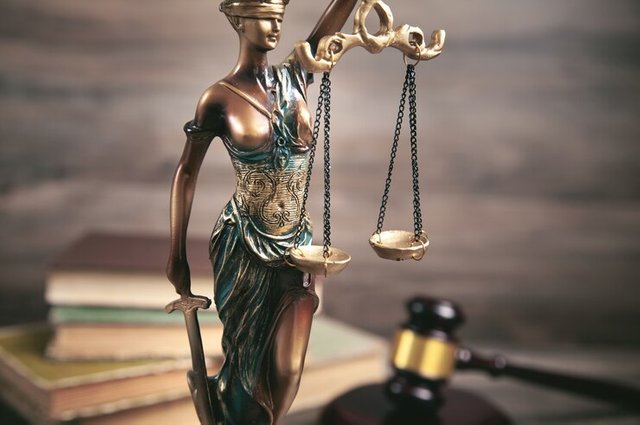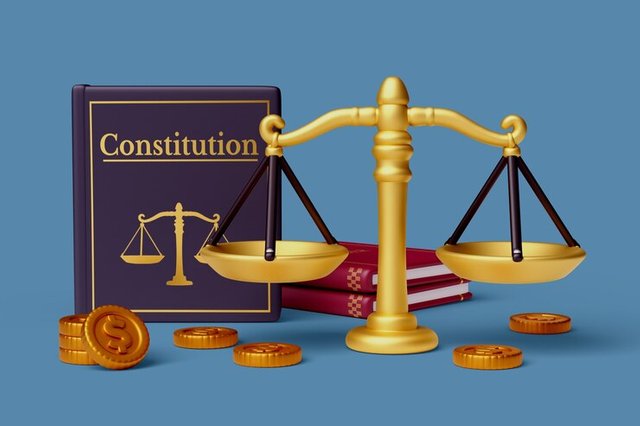SLC22-W4 | Procedural Law
Welcome to my blog, my Steemain lovelies; it feels so good to take a look into another dimension of our legal system.
 Source
SourceProcedural laws refer to the processes and regulations governing substantive law enforcement as well as the administration of justice. It clearly defines and states the must-followed procedures and steps to resolve differences, enforce rights, and ascertain innocence and guilt.
Procedural law is expansive as it covers the court's or tribunal's authority to hear a case, jurisdiction, venue, pleadings, motions, discovery, trials as well as appeals.
Procedural law provides a basic conceptual structure for the enforcement of substantive laws and for fairly, efficiently, and consistently resolving disputes.
Part I
| Choose a law from your country and explain why you consider it a Procedural Law or part of Procedural Law. |
|---|
Many laws in Nigeria are part of Procedural Law; one of them is The Evidence Act 2011, which regulates evidence admissibility in court proceedings in Nigeria. The Act outlines the regulations and protocols for the presentation of evidence in court, involving kinds of admissible evidence, the process of presenting evidence, as well as the authority of the court to concede or repudiate evidence.
In Nigeria, for instance, in criminal cases, justice is administered by the State through criminal development; this implies that the jurisdiction of the State stretches from crime prosecution to the execution of criminal penalty or punishment initiated through the sentence. This makes the process a public one.
In the same way, The Evidence Act 2011 concentrates on the procedures and processes involved in the presentation of evidence, which must be executed in the course of illegal or crimeful trial and must be well-regarded and acceded to by officers of the court.
| Point out which of the principles of procedural law are present in that law and why. |
|---|
The Evidence Act 2011 being a procedural law or part of a procedural law embraces some different principles of procedural law, including:
Principle of Adversarial System
The Act supposes that each group of people constituting a particular side in the legal action will present their cases, with the judge performing as an unbiased arbiter.
Principle of Best Evidence
The Act demands that the best effectual or readily obtainable evidence be tendered in court, making sure that the most trusty and pertinent evidence is accessible to the court.
Principle of Burden of Proof
The party making the claim is placed with the burden of proof by the Act, making sure that it is the responsibility of the party alleging a fact to prove it.
Principle of Fair Hearing
The Act makes provision for the right to a fair hearing, making sure that every party receives an opportunity to tender their case as well as answer the case against them.
Principle of Hearsay Evidence
The admissibility of hearsay evidence is governed by the Act to ensure that only trusty and pertinent hearsay evidence is presented in court.
Principle of Presumption of Innocence
The Act supposes that an accused person, until proven guilty, is innocent, making sure that the prosecution is solely responsible for proving the guilt of the accused beyond reasonable doubt.
Part II
Practical case.
Mr. Ramírez rents a commercial premises to Mr. Pérez. But it turns out that Mr. Pérez has begun to use the premises as a dwelling, a fact that was prohibited in one of the clauses of the contract.
Mr. Ramírez decides to go to court and demand the termination of the contract for breach of that clause. In the course of the lawsuit, Mr. Ramírez promotes a judicial inspection in the commercial premises to verify that Mr. Pérez is certainly using the premises as housing, the court agrees to the judicial inspection and sets the day, time and date to carry it out. .
| Say according to what is seen in the class which of the facts of the case identifies you with "Process" which identifies it with "Procedure" and explain the reason for your answer. |
|---|
Mr. Ramírez's demand, filled with the court for evacuation of the premises or termination of contract due breach of clause or noncompliance or negligence with the terms of the contract agreement characterizes the Process.
The Procedure is characterized by the judicial inspection tailored towards ascertaining the illegitimacy or illegalities carried out in the course of using the premises in agreement with a court as well as the inspection of the whole rented area.
Part III
Practical case.
Mrs. María drives a vehicle and the brakes are gone and she collides or collides with Pedro's vehicle, causing various damages. Faced with the situation and without being able to reach an agreement, Pedro decides to sue María and files the lawsuit in court and upon leaving the court he learns that the vehicle is owned by Mr. Manuel.
| In accordance with what is explained in class, identify the procedural subjects and place them in each of the characters present in the case. Explain why of your answer. |
|---|
In this scenario, Pedro is the affected party, who filed a lawsuit in court with evidence (s) of damage, aiming to obtain the equivalent restitution. This will be characterized as a procedural subject.
Maria, on the other hand, in this scenario, is the respondent or defendant in that she is the one in the position and answerable to the damage caused to Pedro.
Since the vehicle Maria was driving belongs to with which the damage was caused to Padro belongs to Manuel, automatically, Manuel represents the third party.
Consequently, there is a judge who, after hearing both parties and thoroughly examining the evidence presented by the plaintiff, will ascertain definitely the accountabilities as well as the corresponding charges to fix the inflicted damages.
It was nice and educational to take part in the class. Am inviting @mercybliss, @bossj23, and @chima09 to take part in the course


X promotion link